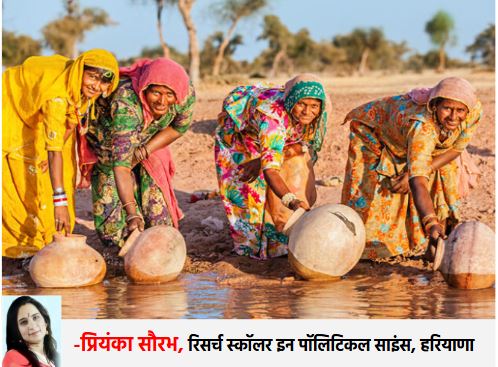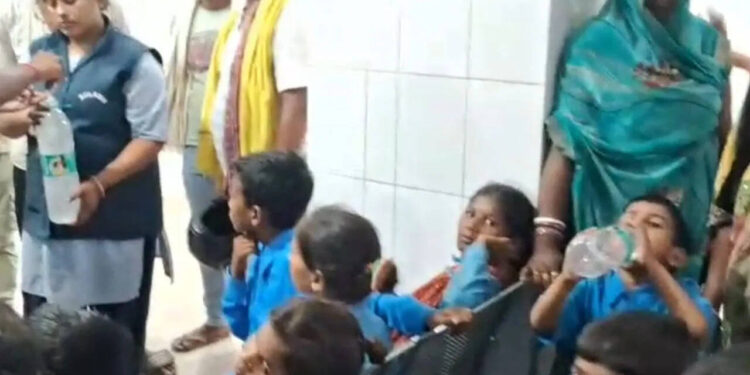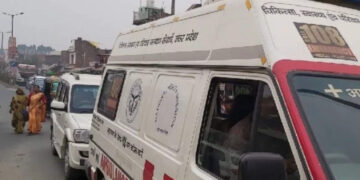: Tuesday, 15 April 2025 2:17 pm
HWhen we talk about climate change, the discussion is often reduced to melting glaciers, rising sea level and changing weather cycles. But its human faces – especially rural Indian women’s faces – are often forgotten. The 2025 Beijing India report once again makes it clear that the climate crisis is not a “gender neutral” disaster. Its effects are deep, uneven and anti-feminine. Crores of rural women of India are already burdened with lack of resources, social boundaries and unpaid domestic responsibilities. Climate change makes this burden more heavy-sometimes as a drought, sometimes flooding, and sometimes in the form of poisonous union of malnutrition and tiredness. The Beijing report states that the climate crisis is not only dropping the quality of life of women, but is also depriving them of their biological, social and economic dignity. Health facilities for rural women are already limited, but the stress of the nutritional crisis and heat from climate change severely affects their reproduction and maternal health.
According to the report, frequent dehydration and anemia have increased cases of premature hysterctomy (uterine-disordance) in women. This is not just a medical process, but an attack on their body’s autonomy and dignity. Infertility, complex delivery, and difficulties in pregnancies are now becoming common problems – and there is a clear shadow of insecurity associated with the climate behind them.
Most of the rural women of India either work in the fields or are engaged in small agricultural work, but they are not the mistress of the land. When the rain is untimely, when the crops dry up or when the soil becomes barren – the first and the most shock is to these women. In areas such as Bundelkhand, frequent drought has not only dropped production, but has also increased the seasonal unemployment of women. Cutting from the field means emptying of the kitchen, farewell to the girls’ school and another round of debt.
Women who were engaged in handicrafts, food processing or small -scale businesses other than agriculture were not spared by extreme weather. The Beijing report suggests that the income of women in non-agricultural areas declined by 33% on an average of 33% during extreme climate incidents in 2023-24. This is not only the economic loss, but also a furore on self -reliance and confidence. Climate -motivated displacement, decline in family income and traditional thinking – these three together are interrupting the education of teenage girls.
When the family has limited resources, the first scissors run on the girls’ education. They are removed from school and pierced domestic work, or prepared for early marriage. This broken chain of education limits their lifetime opportunities. Especially tribal and Dalit women – who are already on social marginalized – are the most neglect of climate disasters.
During the 2020 cyclone ‘Ampan’, Dalit women from the Sundarban region reported that they were excluded from the relief centers, and had no role in the shelter decisions. Social discrimination becomes even more spicy during climate crisis. The Beijing India report not only exposes this crisis, but also suggests a clear way to deal with it – the most important of which is to bring gender sensitivity to the center of climate strategy.
State level climate schemes should include specific needs of women. States like Odisha have begun to include gender indicators in their climate strategies, but need to be repeated in every state. According to the village, caste and economic status, gender-based data collection is necessary so that policies can prove to be effective on the ground.
Creating a climate vulnerability index with gender component at the panchayat level can be an impressive step. Self-help groups and women cooperative societies can be strengthened by providing skills in climate-flexible agriculture, green jobs, renewable energy and agricultural impartation. Equipping primary health centers with better resources, especially for breeding and maternal care, is essential – especially in areas that are affected by climate crisis.
Water committees run by women in Gujarat have proved that when women become part of policy making and resource management, solutions are more durable and sensitive. Women participation in local disaster management, forest rights committees and water management should be made mandatory. Missions running under (National Climate Action Plan) – such as Ujala Yojana, PMUY etc. – should be redefined with women -centric views.
The expansion of these schemes in climate-sensitive areas will not only strengthen health and livelihood, but will also strengthen gender justice. Rural women are not only a victim of climate change – they can also become a carrier of change. But this requires that we not only consider them as’ eligible ‘help’, but as’ partners’.
This is the message of the Beijing report-that if we have to deal with climate change effectively, then gender and climate have to be understood, not separate from each other, but together. When a woman scraps drinking water for her child with a dry pond soil, she becomes not just maternity, but the most tragic image of climate crisis. Now is the time that policy, science and society – all three should listen to his voice seriously.
Also read – Click to read your state / city news before the newspaper
Web Title-The battle for water, stomach and identity: climate shock on rural women






